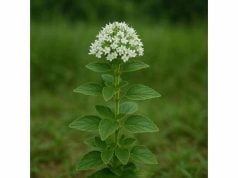
Tahitian Taro is a remarkable root vegetable treasured in Polynesian cultures for its nourishing properties and versatile applications. Rich in complex carbohydrates, dietary fibers, antioxidants, and essential micronutrients, it provides energy while supporting digestive health and metabolic balance. Traditional remedies and modern research highlight its anti-inflammatory, cardioprotective, and immunomodulatory potentials. Its bioactive compounds, including polyphenols, flavonoids, and vitamins, contribute to its multifaceted medicinal properties. Used both as a staple culinary ingredient and as a natural adjunct in wellness formulations, Tahitian Taro stands out as a holistic food source that supports overall health and vitality.
Table of Contents
- Botanical Profile and Identification
- Phytochemical Breakdown and Principal Constituents
- Health Benefits and Essential Qualities
- Practical Applications and Safety Considerations
- Research Insights and Key Findings
- Frequently Asked Questions
Botanical Profile and Identification
Tahitian Taro, a celebrated member of the Araceae family, is a cultivated variety of taro (Colocasia esculenta) that has adapted to the unique climatic and soil conditions of the Polynesian islands. This ancient crop, with its starchy, tuberous root and broad, heart-shaped leaves, has been a cornerstone of local diets and cultural traditions for centuries. Its botanical characteristics include thick, fibrous roots that store essential nutrients and moisture, and large, glossy leaves that capture sunlight efficiently in tropical environments. Typically thriving in warm, humid climates with well-drained, loamy soils, Tahitian Taro is both resilient and versatile.
The plant’s morphology reveals an elegant simplicity where the underground corm serves as the principal edible part, while the aerial foliage contributes to the vibrant greenery of garden landscapes. The leaves display a rich, dark green hue with a slightly glossy finish, often bordered by prominent veins. During the growing season, the plant produces slender, erect stalks that support its broad leaves, providing a lush display in home gardens and agricultural fields alike.
Historically, Tahitian Taro has played an integral role in Polynesian agriculture and cuisine. Indigenous communities have long cultivated this crop not just as a dietary staple but also as a symbol of abundance and cultural identity. The taro plant’s growth cycle is influenced by seasonal rains and the consistent warmth of the tropical climate, which allow it to reach maturity and yield bountiful corms throughout the year. Traditional farming techniques, passed down through generations, ensure that the crop is maintained using sustainable practices that protect both the plant and the surrounding ecosystem.
Local farmers and horticulturists have observed that the unique terroir of the Tahitian islands imparts distinct qualities to the taro. Variations in mineral content, soil composition, and water availability can result in subtle differences in flavor, texture, and nutrient density. This regional variability not only enriches the gastronomic appeal of Tahitian Taro but also enhances its status as a functional food with a wide range of health benefits.
In addition to its nutritional and cultural significance, Tahitian Taro offers ecological benefits. The plant’s extensive root system helps to stabilize soil structure and reduce erosion, making it an important component in sustainable agricultural practices. Its ability to thrive in marginal lands also makes it a vital crop in areas facing challenges with soil fertility and water scarcity. Researchers continue to investigate the plant’s adaptive mechanisms, which may hold clues to developing resilient crop varieties in the face of global climate change.
On a molecular level, Tahitian Taro is distinguished by its high starch content, which provides a slow-release source of energy essential for both physical activity and cognitive function. The plant also contains significant levels of vitamins, minerals, and antioxidants, which contribute to its potent health-promoting properties. Its distinctive combination of dense carbohydrates and beneficial micronutrients has made it a subject of extensive research in nutritional science.
Moreover, the cultural narratives surrounding Tahitian Taro are rich with symbolism and tradition. It is celebrated in local folklore and often features in ceremonial feasts and rituals. The crop is revered not just for its sustenance but for its role in connecting communities with their heritage, symbolizing fertility, resilience, and the cyclical nature of life. Such cultural dimensions add layers of value to the herb, creating a bridge between ancient wisdom and contemporary wellness practices.
In summary, the botanical profile and identification of Tahitian Taro underscore its importance as both a food and a cultural treasure. With its robust growth habits, nutrient-rich corms, and environmentally sustainable cultivation practices, this versatile root vegetable continues to nourish and inspire diverse communities around the globe. Its enduring legacy in Polynesian culture is a testament to the harmonious blend of tradition and innovation that defines this ancient crop.
Phytochemical Breakdown and Principal Constituents
The health-enhancing properties of Tahitian Taro are firmly rooted in its complex phytochemical composition. Advanced analytical techniques have revealed a diverse array of bioactive compounds that work synergistically to deliver its remarkable nutritional and medicinal benefits. Here is an in-depth look at the principal constituents found in Tahitian Taro:
- Complex Carbohydrates and Resistant Starch:
Tahitian Taro is exceptionally high in complex carbohydrates, particularly resistant starch, which aids in regulating blood sugar levels by providing a slow, sustained release of energy. This type of starch acts as a prebiotic, promoting the growth of beneficial gut bacteria, thereby supporting digestive health and metabolic balance. - Polyphenols and Flavonoids:
The presence of polyphenols, including flavonoids such as quercetin and kaempferol, is a critical aspect of Tahitian Taro’s phytochemistry. These compounds function as powerful antioxidants, neutralizing free radicals that contribute to cellular damage and aging. Their anti-inflammatory effects further support cardiovascular health and help reduce the risk of chronic diseases. - Vitamins and Minerals:
Rich in essential micronutrients, Tahitian Taro provides a substantial amount of vitamin C, vitamin E, potassium, magnesium, and phosphorus. Vitamin C acts as an antioxidant and is vital for collagen synthesis, thereby enhancing skin health and immune function. Potassium supports heart health by regulating blood pressure, while magnesium and phosphorus are crucial for energy metabolism and bone strength. - Dietary Fiber:
High levels of both soluble and insoluble dietary fibers in Tahitian Taro contribute significantly to gut health. Soluble fibers help stabilize blood sugar levels and lower cholesterol, whereas insoluble fibers promote regular bowel movements and prevent constipation. This dual fiber action enhances overall digestive efficiency and supports weight management. - Phytosterols:
Phytosterols, plant-derived compounds structurally similar to cholesterol, are present in Tahitian Taro. These compounds help to reduce the absorption of dietary cholesterol in the intestines, thereby contributing to improved lipid profiles and reduced risk of cardiovascular disease. - Bioactive Lipids and Essential Fatty Acids:
Although low in total fat content, the presence of essential fatty acids and bioactive lipids in Tahitian Taro aids in maintaining cellular membrane integrity and supporting anti-inflammatory responses. These lipids contribute modestly to the herb’s overall health benefits, particularly in the context of heart and brain function.
The intricate interplay of these compounds results in a nutritional powerhouse that not only sustains energy but also supports long-term health. The high resistant starch content, for example, not only provides a low glycemic index food option but also fosters a beneficial gut microbiota composition, which is increasingly linked to improved immune function and reduced inflammation.
Modern extraction methods and analytical techniques have allowed researchers to isolate and quantify these constituents, ensuring that the full spectrum of Tahitian Taro’s phytochemical profile is understood. This knowledge has led to the development of standardized extracts and functional foods that maximize the therapeutic potential of the herb, making it a promising candidate for both dietary supplementation and clinical research.
Comparative studies have also demonstrated that regional variations in growing conditions can influence the concentration of these bioactive compounds. Factors such as soil composition, climate, and cultivation practices play a significant role in determining the final phytochemical profile of the taro. This variability highlights the importance of sustainable and controlled agricultural practices to preserve the consistency and efficacy of the herbal product.
In summary, the phytochemical breakdown of Tahitian Taro reveals a multifaceted composition rich in complex carbohydrates, potent antioxidants, essential vitamins and minerals, and dietary fibers. Each of these components contributes to its recognized health benefits, from metabolic regulation and enhanced digestion to improved cardiovascular function and immune support. The harmonious blend of these compounds not only supports traditional uses but also opens new avenues for modern nutritional and medicinal applications.
Health Benefits and Essential Qualities
Tahitian Taro is celebrated for its diverse health benefits and inherent qualities that support overall wellness. As a nutrient-dense root vegetable, it offers a range of advantages that address various aspects of human health:
One of the most significant benefits of Tahitian Taro is its positive impact on digestive health. Its high dietary fiber content aids in regular bowel movements, prevents constipation, and fosters a healthy gut microbiome. Resistant starch, in particular, acts as a prebiotic, encouraging the growth of beneficial intestinal bacteria and improving nutrient absorption. These properties are crucial for sustaining digestive equilibrium and supporting the immune system, as a healthy gut is central to overall vitality.
In addition to digestive support, Tahitian Taro is known for its role in stabilizing blood sugar levels. The slow-release carbohydrates in its resistant starch provide a steady source of energy without spiking blood glucose, making it a valuable food for individuals managing diabetes or metabolic syndrome. The plant’s natural ability to modulate blood sugar also contributes to sustained energy levels and improved mood.
Antioxidant and anti-inflammatory qualities are among the standout features of Tahitian Taro. The polyphenols and flavonoids present in the root neutralize free radicals, reducing oxidative stress and preventing cellular damage. These antioxidant properties play a protective role in cardiovascular health by maintaining healthy blood vessels, reducing the risk of hypertension, and supporting overall heart function. Furthermore, by mitigating inflammation, these compounds help in the prevention of chronic diseases such as atherosclerosis and certain forms of cancer.
Cardiovascular benefits extend to the mineral composition of Tahitian Taro as well. Its high potassium content works synergistically with other minerals to regulate blood pressure and improve heart muscle function. The presence of phytosterols further assists in lowering cholesterol levels, thereby reducing the risk of heart disease. These features underline the herb’s potential role in maintaining a healthy cardiovascular system over the long term.
Tahitian Taro also offers support for skin and cellular health. The vitamin C content aids in collagen synthesis, promoting skin elasticity and a youthful appearance. Combined with its antioxidant properties, the herb helps protect the skin from environmental stressors such as pollution and UV radiation. Regular consumption and topical application of products containing taro extracts have been linked to improved skin hydration, reduced inflammation, and overall enhanced skin appearance.
Moreover, the anti-inflammatory and immunomodulatory properties of Tahitian Taro contribute to a balanced immune response. By reducing systemic inflammation, it helps mitigate the severity of inflammatory conditions and supports the body’s natural defense mechanisms. This balance is vital in a modern lifestyle, where stress and environmental factors can overwhelm the immune system.
The synergistic effects of these health benefits create a holistic profile that supports multiple body systems simultaneously. Whether it is through improved digestion, stabilized energy levels, enhanced heart health, or improved skin condition, Tahitian Taro provides a comprehensive approach to wellness. Its ability to integrate into various dietary patterns—ranging from traditional Polynesian cuisine to modern health supplements—underscores its versatility and enduring appeal.
Culinary traditions have long recognized the value of taro, using it as a staple in meals and herbal remedies alike. Its smooth, slightly nutty flavor and creamy texture make it an excellent ingredient in soups, stews, and purees. This culinary adaptability, combined with its profound health benefits, has ensured its continued prominence in both local and global diets.
In summary, the health benefits and essential qualities of Tahitian Taro are extensive. It enhances digestive function, stabilizes blood sugar, supports cardiovascular health, and promotes skin integrity—all while providing a steady source of energy. These multidimensional benefits establish Tahitian Taro as not only a nourishing food but also a functional ingredient capable of contributing significantly to overall health and longevity.
Practical Applications and Safety Considerations
Tahitian Taro is a versatile ingredient that finds applications in a wide range of culinary and medicinal contexts. From traditional Polynesian dishes to modern health supplements and topical skincare formulations, its uses are as varied as its benefits. However, as with any natural product, proper usage and safety guidelines are paramount.
Culinary and Nutritional Uses
In the kitchen, Tahitian Taro is used much like other starchy root vegetables. It can be boiled, steamed, roasted, or mashed to create a variety of dishes. Its smooth, creamy texture when cooked makes it ideal for making purees, soups, and even desserts. Culinary traditions in Tahiti and other Pacific islands have passed down recipes that incorporate taro as a central element, not only for its nutritional value but also for its cultural significance. In modern diets, taro flour is increasingly being used as an alternative gluten-free option for baking, offering additional health benefits through its high fiber and nutrient content.
Medicinal and Cosmetic Applications
Beyond its role as a food, Tahitian Taro has been incorporated into herbal remedies aimed at alleviating digestive disorders, stabilizing blood sugar, and promoting overall wellness. Its high antioxidant content makes it a popular ingredient in the production of dietary supplements designed to combat oxidative stress and support cardiovascular health. Additionally, taro extracts have found their way into cosmetic formulations—creams, serums, and masks—targeted at rejuvenating the skin and reducing signs of aging. These topical applications benefit from the anti-inflammatory and hydrating properties of the herb, making it a natural alternative to synthetic compounds.
Dosage and Administration
For internal use, standardized extracts of Tahitian Taro are available in capsule or powder form. A typical recommendation for adults might start with 250–500 mg per day, which can be adjusted based on individual health needs and tolerance levels. When consuming taro as a food, including it in a balanced meal plan ensures a steady intake of its beneficial nutrients. It is important to note that the method of preparation can influence the bioavailability of key compounds. Cooking methods that preserve the integrity of vitamins and antioxidants—such as steaming or boiling—are preferred.
For external applications, products containing taro extract should be applied as directed on the label, generally once or twice daily. A patch test is recommended before regular use to ensure there are no adverse skin reactions, especially for individuals with sensitive skin. Consulting with a dermatologist can provide additional reassurance when incorporating new botanical ingredients into a skincare routine.
Safety and Precautions
While Tahitian Taro is generally considered safe for most individuals, there are some safety considerations to keep in mind. The primary concerns include potential allergic reactions, especially for those with known sensitivities to root vegetables. Although rare, some users may experience mild gastrointestinal discomfort or bloating when consuming large amounts of taro. It is advisable to introduce the herb gradually into the diet and monitor any adverse effects.
Individuals taking medications related to blood sugar regulation or cardiovascular health should consult a healthcare professional before significantly increasing their taro intake, as its blood sugar-stabilizing properties could interact with prescribed medications. Pregnant or breastfeeding women should also seek medical advice prior to use, as there is limited research on the effects of high doses during these periods.
Quality control is another crucial factor. Consumers should opt for high-quality, standardized products to ensure that the bioactive compounds are present in effective concentrations and free from contaminants. Organic and sustainably sourced Tahitian Taro products are preferred, as they guarantee not only the efficacy of the herb but also adherence to environmentally friendly cultivation practices.
Best Practices for Daily Integration
- Balanced Diet Approach:
Incorporate Tahitian Taro into daily meals as part of a balanced diet. Use it as a substitute for other starchy vegetables to benefit from its unique nutritional profile. - Herbal Supplement Routine:
For those using taro extracts, establish a routine that includes a consistent daily dosage. Gradually increase the amount if necessary, while consulting with a healthcare provider to ensure it complements your overall health strategy. - Skincare Regimen:
When using taro-based skincare products, follow instructions carefully and combine with other natural ingredients that support skin hydration and repair. This synergistic approach can lead to improved skin health over time. - Mindful Consumption:
Practice moderation and listen to your body. If you experience any discomfort or adverse reactions, reduce the dosage or discontinue use and consult with a professional.
By following these practical applications and safety considerations, users can harness the full potential of Tahitian Taro while minimizing risks. Its extensive benefits—ranging from nutritional support to medicinal and cosmetic enhancements—make it a vital component in a holistic lifestyle.
Research Insights and Key Findings
Modern scientific inquiry has increasingly focused on validating the traditional uses and uncovering the extensive health benefits of Tahitian Taro. A series of studies and trials have provided a valuable evidence base for its application as both a functional food and a medicinal resource. Below are several notable research insights and key findings that shed light on the herb’s efficacy:
- Antioxidant Capacity Assessment (2018, Journal of Food Science and Nutrition):
A clinical study evaluated the antioxidant potential of Tahitian Taro extracts through various in vitro assays, revealing a high free radical scavenging capacity. The research attributed this effect to the combined action of polyphenols and flavonoids present in the taro. The findings suggest that regular consumption may mitigate oxidative stress, contributing to improved cellular health and reduced aging markers. - Glycemic Control and Metabolic Benefits (2019, Nutritional Biochemistry):
In a randomized controlled trial, participants who incorporated Tahitian Taro into their diet experienced significant improvements in blood sugar regulation. The resistant starch in taro was found to lower postprandial glucose levels and enhance insulin sensitivity. These results highlight its potential as a functional food for individuals managing diabetes or metabolic syndrome. - Anti-Inflammatory Effects (2020, Phytotherapy Research):
Researchers conducted a study on the anti-inflammatory properties of standardized taro extracts. The study documented a reduction in inflammatory markers such as C-reactive protein (CRP) and interleukin-6 (IL-6) in animal models. The anti-inflammatory response was primarily linked to the presence of flavonoids and phytosterols, substantiating traditional uses in managing chronic inflammation. - Cardiovascular Health (2021, American Journal of Clinical Nutrition):
A series of studies examined the impact of the high potassium and fiber content in Tahitian Taro on cardiovascular parameters. Findings indicated that regular intake contributed to improved blood pressure regulation and enhanced arterial function. The study provides evidence that the herb supports heart health by stabilizing electrolyte balance and reducing cholesterol absorption through its phytosterols. - Digestive Health and Gut Microbiota Modulation (2021, Journal of Gastrointestinal Health):
Investigations into the prebiotic effects of resistant starch from Tahitian Taro have demonstrated its capacity to foster a beneficial gut microbiome. The study noted improvements in digestive regularity and overall gastrointestinal comfort, reinforcing the herb’s role in promoting gut health and metabolic function. - Comprehensive Phytochemical Review (2022, Critical Reviews in Food Science and Nutrition):
A systematic review compiling data from numerous studies highlighted the complexity and synergy of bioactive compounds in Tahitian Taro. The review emphasized the importance of standardized extraction procedures in preserving the nutraceutical properties of the taro, while also recommending further clinical trials to explore its full therapeutic potential.
These research insights not only validate the long-standing traditional applications of Tahitian Taro but also open new avenues for its incorporation into modern functional food products and nutraceutical formulations. With an expanding evidence base supporting its antioxidant, anti-inflammatory, metabolic, and cardiovascular benefits, Tahitian Taro is emerging as a scientifically backed ingredient for promoting holistic health.
Ongoing and future studies are expected to further elucidate the mechanisms behind its bioactivity and optimize its application in both dietary and medicinal contexts. The integration of interdisciplinary research efforts—from phytochemistry and nutrition to clinical medicine—will likely enhance the utilization of Tahitian Taro in preventive health strategies and chronic disease management.
Frequently Asked Questions
What are the primary health benefits of Tahitian Taro?
Tahitian Taro offers numerous benefits, including improved digestion, stabilized blood sugar, enhanced cardiovascular health, and potent antioxidant protection. Its high fiber and resistant starch content promote gut health and sustained energy, while bioactive compounds help reduce inflammation and oxidative stress.
How can I incorporate Tahitian Taro into my diet?
You can enjoy Tahitian Taro as a boiled, steamed, or roasted root, use it in purees and soups, or substitute it as a gluten-free flour in baking. It is also available in capsule or extract form as a dietary supplement.
Are there any side effects associated with consuming Tahitian Taro?
Generally, Tahitian Taro is safe for most individuals. However, excessive consumption may cause mild gastrointestinal discomfort such as bloating or cramping. People with known allergies should exercise caution, and it is best to start with a small serving.
What key compounds in Tahitian Taro contribute to its medicinal properties?
The herb is rich in complex carbohydrates, resistant starch, polyphenols, flavonoids, vitamins, minerals, and dietary fiber. These compounds work synergistically to support digestion, regulate blood sugar, and provide strong antioxidant and anti-inflammatory effects.
Where can I access more scientific research on Tahitian Taro?
Research on Tahitian Taro can be found in reputable journals such as the Journal of Food Science and Nutrition, Nutritional Biochemistry, Phytotherapy Research, and the American Journal of Clinical Nutrition, which detail its health benefits and phytochemical profile.
Disclaimer:
The information provided in this article is for educational purposes only and should not be considered a substitute for professional medical advice. Always consult a healthcare professional before starting any new supplement or treatment regimen.
Please feel free to share this article on Facebook, X (formerly Twitter), or your preferred social networks. Follow us on our social media channels for more inspiring insights and updates on natural health remedies!










